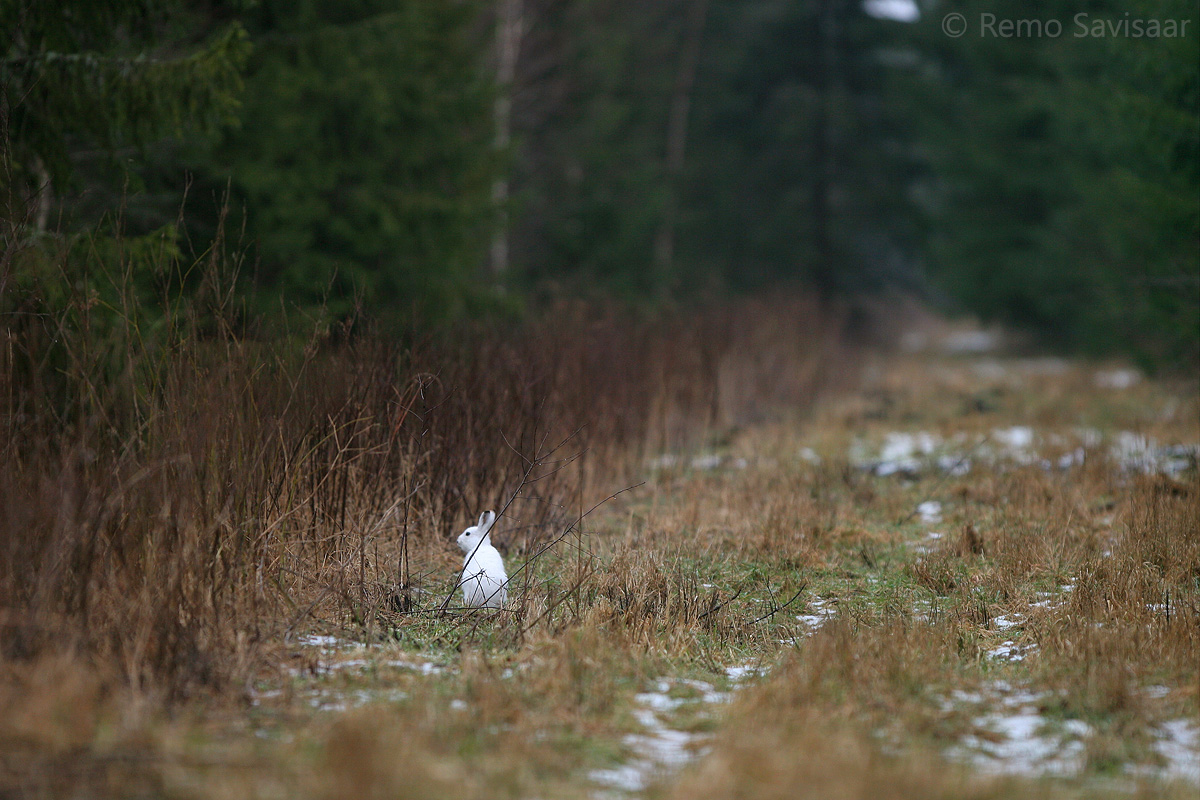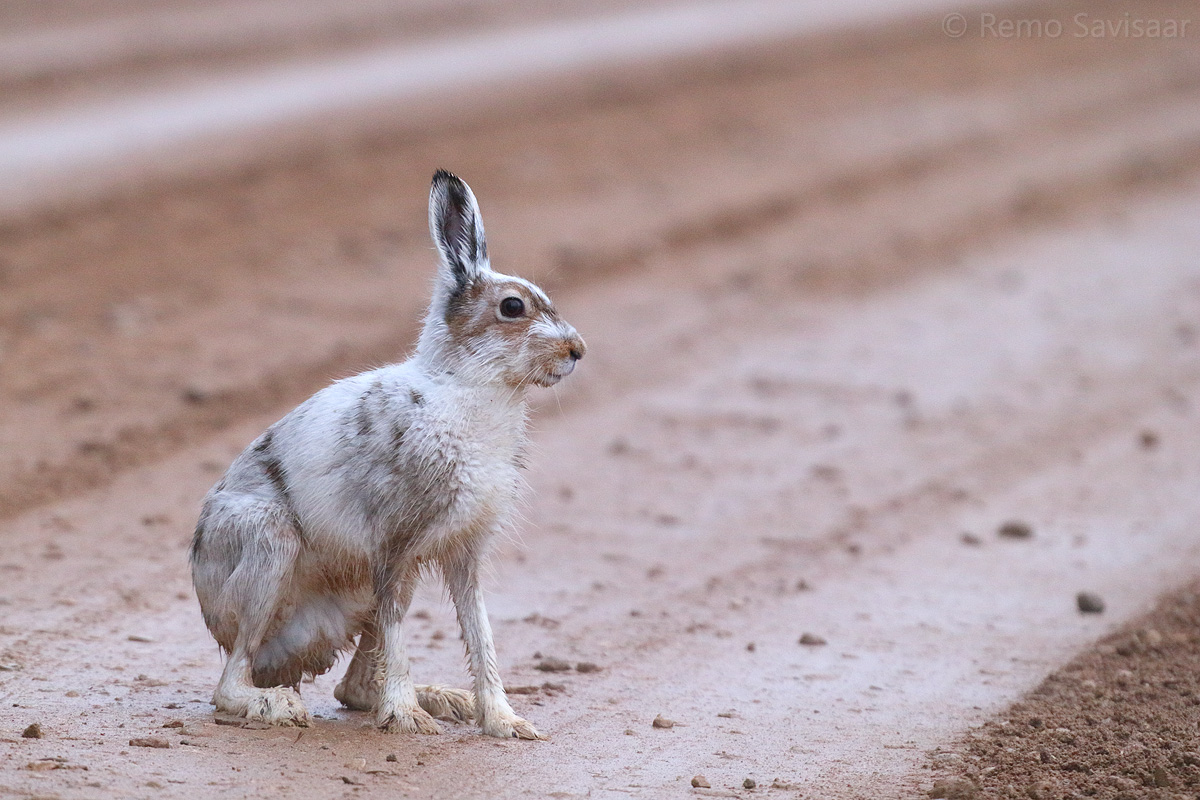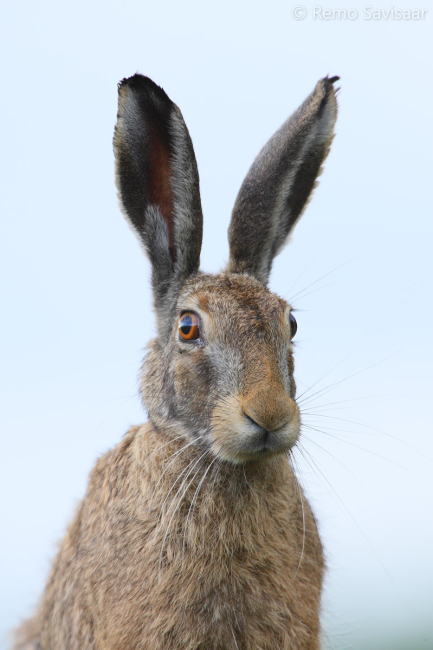The ears of the European or brown hare (Lepus europaeus) are longer than those of the mountain or white hare (Lepus timidus). Photographed in June
Photos: Remo Savisaar
English translation Liis
Estonian text posted by the Animal of the Year Team 26.07.2018
This time we will talk briefly about the rabbits and hares that from time to time end up on the dinner table of the lynx. In our nature two species can be encountered: the brown hare and the white hare. I call the brown hare the field hare and the white hare the forest hare. It characterises the habitats where they primarily live. Sometimes their paths cross and then we can meet the white hare in a field between forests and the other way about.
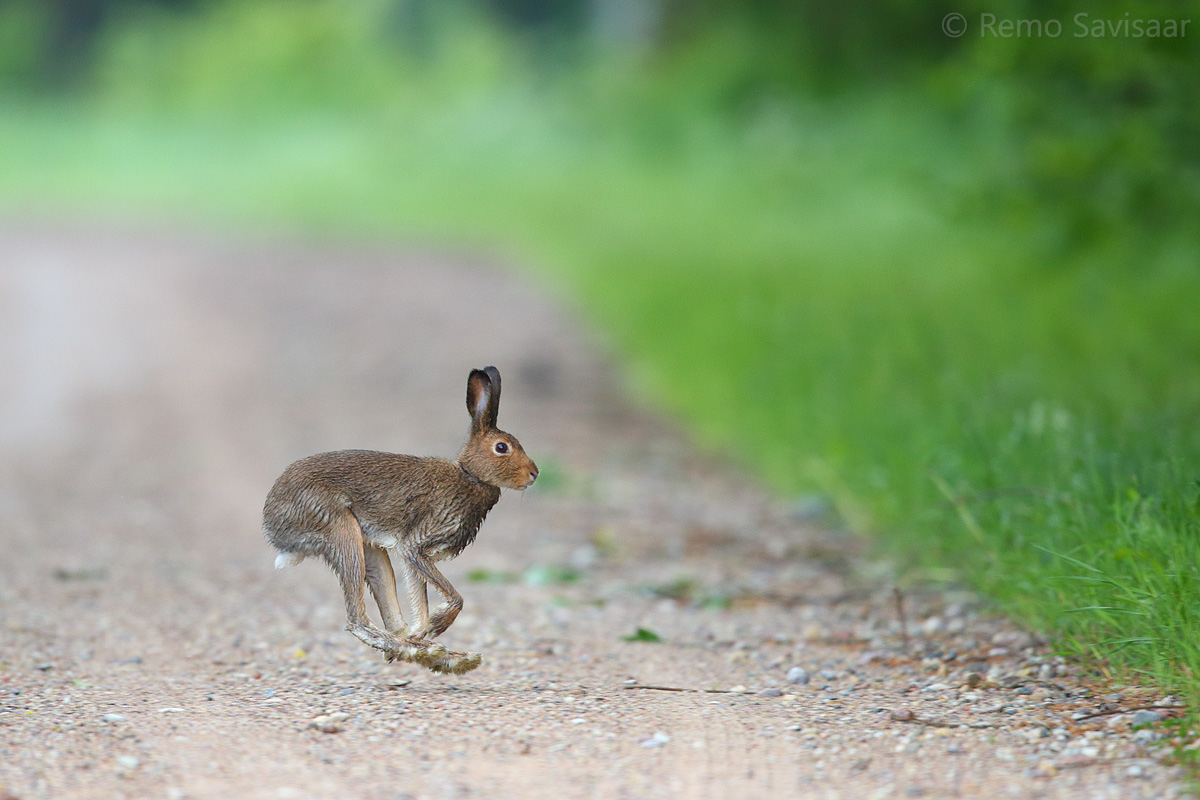
The white hare or forest hare is primarily active in forests and bog areas preferring as habitat forests with an undergrowth of spruces or mixed forests. The brown hare or field hare prefers open landscapes, being mostly active in fields and meadows but also at forest verges. It evades larger forest massifs.
How to distinguish between these hares? In winter it is easy, because the white hare that wears a greyish fur in the summer gets a beautiful white coat in winter. The brown hare is greyish in winter and brownish in summer, and in that period it is a little more complicated to distinguish between them. For an experienced nature observer it is however simple! How then to distinguish between the creatures in summer furs?
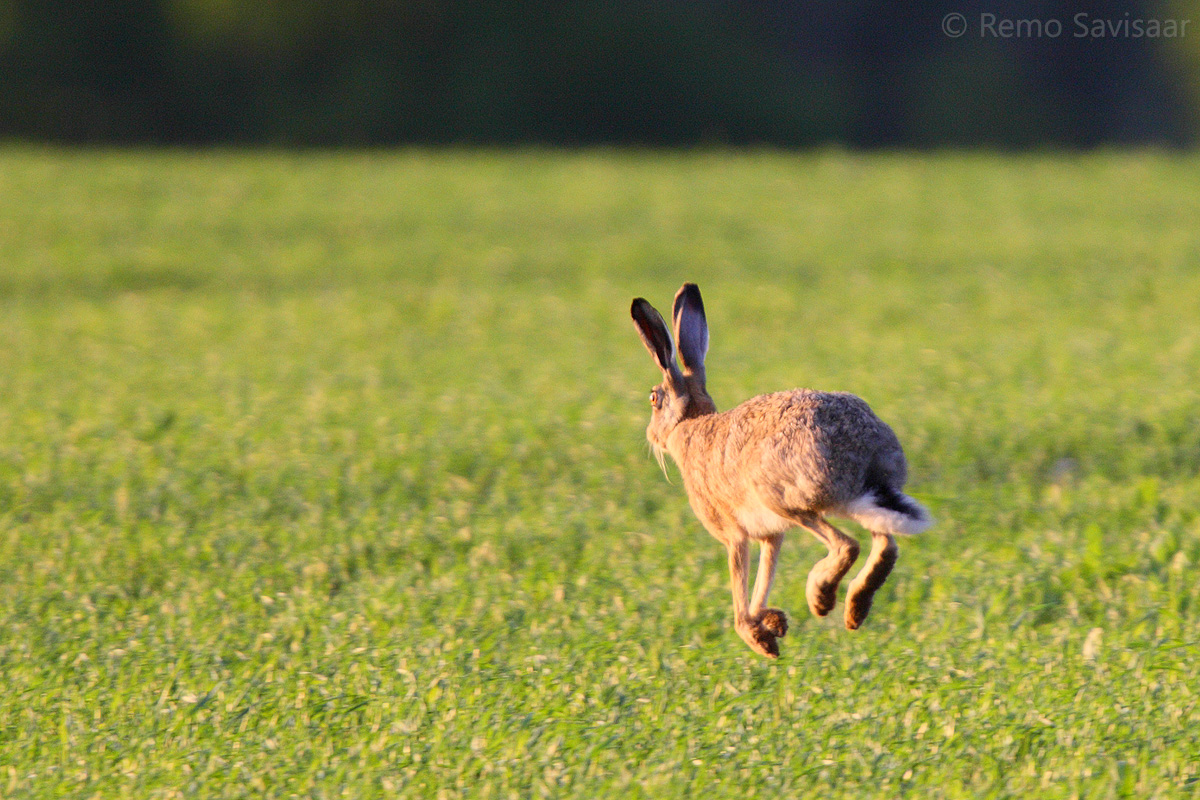
The ears, legs and tail of the white hare are shorter than those of the brown hare. At the same time the paws of the white hare are wider than those of the brown hare. The tail tuft of the white hare stays white all year. The tail of the brown hare is longer, its underside is white and the upper part dark. The body of the white hare is likewise smaller and the head more rounded. Unfortunately, if the animals are not seen side by side the identification is more difficult, becoming simpler only with gathered experience!
Remo Savisaar
